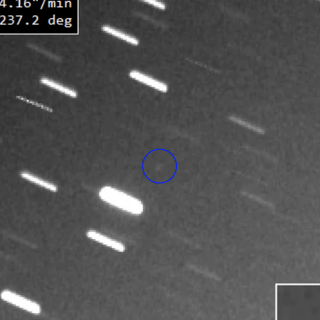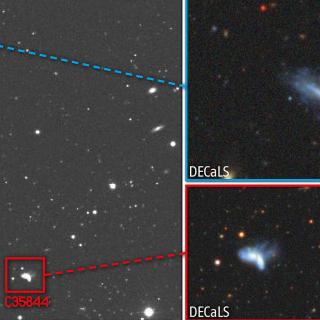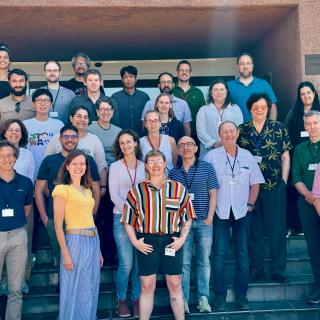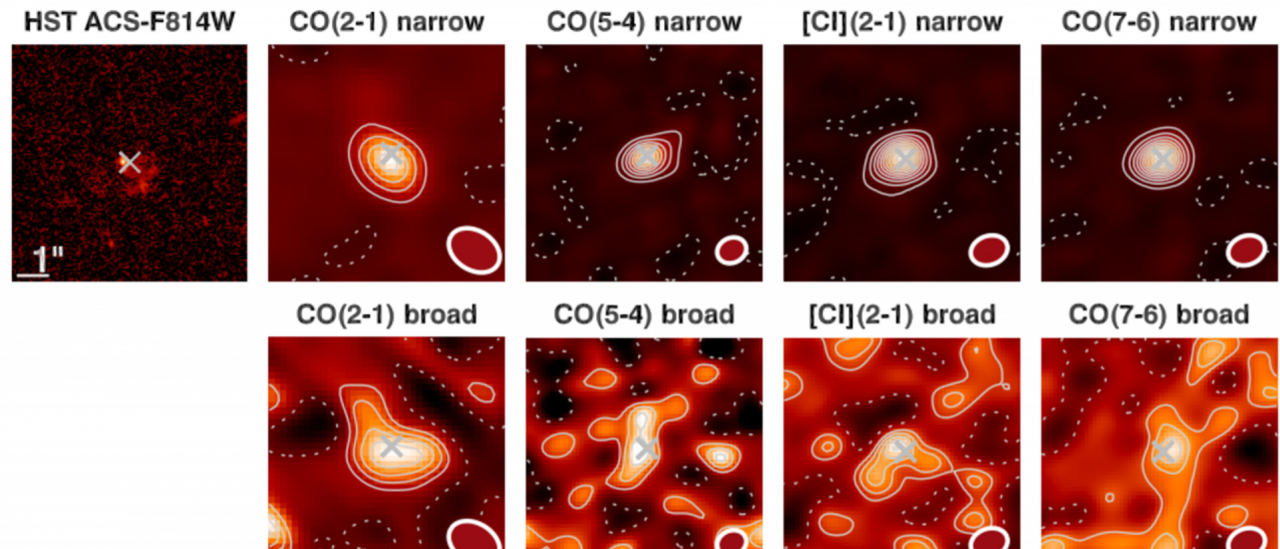Feedback-driven winds from star formation or active galactic nuclei might be a relevant channel for the abrupt quenching of star formation in massive galaxies. However, both observations and simulations support the idea that these processes are non-conflictingly co-evolving and self-regulating. Furthermore, evidence of disruptive events that are capable of fast quenching is rare, and constraints on their statistical prevalence are lacking. Here we present a massive starburst galaxy at redshift z=1.4, which is ejecting ~46% of its molecular gas mass at a startling rate of >10,000 solar masses per year. A broad component that is red-shifted from the galaxy emission is detected in four (low and high J) CO and [C I] transitions and in the ionized phase, which ensures a robust estimate of the expelled gas mass. The implied statistics suggest that similar events are potentially a major star-formation quenching channel. However, our observations provide compelling evidence that this is not a feedback-driven wind, but rather material from a merger that has been probably tidally ejected. This finding challenges some literature studies in which the role of feedback-driven winds might be overstated.
It may interest you
-
 The discovery of 2024 NP2 took place during the night of July 4th in images taken during the commissioning of the TST, a new telescope recently installed at the Teide Observatory. On July 4th the first regular observations were made in the commissioning of the Transient Survey Telescope (TST), an astronomical installation produced by a public-private collaboration between the IAC and the Canary company Light Bridges , at the Teide Observatory (Tenerife). The TST is a robotic telescope with a wide field. With a 1 metre telescope and a camera using an sCMOS detector at its prime focus, it canAdvertised on
The discovery of 2024 NP2 took place during the night of July 4th in images taken during the commissioning of the TST, a new telescope recently installed at the Teide Observatory. On July 4th the first regular observations were made in the commissioning of the Transient Survey Telescope (TST), an astronomical installation produced by a public-private collaboration between the IAC and the Canary company Light Bridges , at the Teide Observatory (Tenerife). The TST is a robotic telescope with a wide field. With a 1 metre telescope and a camera using an sCMOS detector at its prime focus, it canAdvertised on -
 An international team of researchers, including researchers from the IAC, have studied in detail a remarkable couple of dwarf galaxies “dancing with each other” inside an unpopulated area of the Universe. This uncommon pair of low-mass galaxies merging “in the middle of nowhere”, near the center of a cosmic void, offers a unique view of one-on-one interactions and of the evolution of galaxies located in very low density environments. Researchers from the Calar Alto Void Integral-field Treasury surveY (CAVITY) project, led by the University of Granada, have discovered a rare and ongoingAdvertised on
An international team of researchers, including researchers from the IAC, have studied in detail a remarkable couple of dwarf galaxies “dancing with each other” inside an unpopulated area of the Universe. This uncommon pair of low-mass galaxies merging “in the middle of nowhere”, near the center of a cosmic void, offers a unique view of one-on-one interactions and of the evolution of galaxies located in very low density environments. Researchers from the Calar Alto Void Integral-field Treasury surveY (CAVITY) project, led by the University of Granada, have discovered a rare and ongoingAdvertised on -
 From 20 to 23 May, the Instituto de Astrofísica de Canarias (IAC) hosted the scientific meeting of the GATOS (Galaxy Activity, Torus, and Outflow Survey) collaboration, a meeting that brought together 30 leading international researchers to advance our knowledge of one of the most enigmatic phenomena in the universe: active galactic nuclei. GATOS is an international collaboration of 60 experts from institutions around the world, united by the common goal of deciphering the complex mechanisms that govern active galactic nuclei. The centres of galaxies harbour supermassive black holes thatAdvertised on
From 20 to 23 May, the Instituto de Astrofísica de Canarias (IAC) hosted the scientific meeting of the GATOS (Galaxy Activity, Torus, and Outflow Survey) collaboration, a meeting that brought together 30 leading international researchers to advance our knowledge of one of the most enigmatic phenomena in the universe: active galactic nuclei. GATOS is an international collaboration of 60 experts from institutions around the world, united by the common goal of deciphering the complex mechanisms that govern active galactic nuclei. The centres of galaxies harbour supermassive black holes thatAdvertised on
